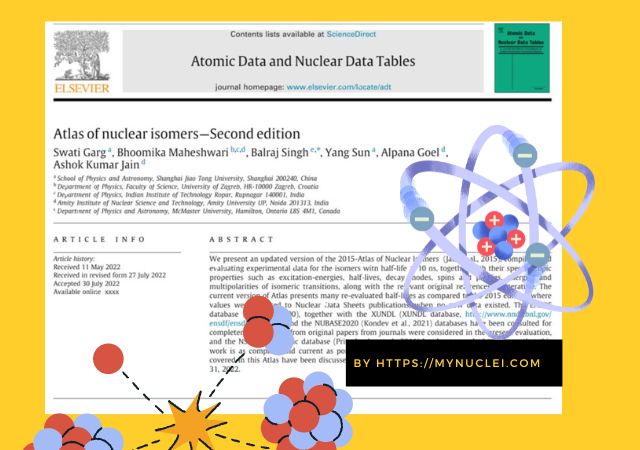“It is indeed a very satisfying moment. Our work over the last 4 years finally comes to a fruitful completion. We hope that it will lead to many new findings for the researchers in experimental as well as theoretical nuclear physics. We celebrate this moment by sharing this 244 page article with our colleagues and friends. Actual page numbering and volume of the journal will become available soon.” [courtesy by Dr Bhoomika’s facebook group post]
Nuclear isomers are excited states of atomic nuclei that have the same number of protons and neutrons but differ in their energy levels and/or nuclear shape. These isomers are characterized by having longer lifetimes compared to typical excited nuclear states, which allows for their distinct identification and study.
Nuclear Isomers Abstract
“An updated version of the 2015-Atlas of Nuclear Isomers (Jain et al., 2015), compiling and evaluating experimental data for the isomers with half-life ≥ 10 ns, together with their spectroscopic properties such as excitation-energies, half-lives, decay modes, spins and parities, energies and multipolarities of isomeric transitions, along with the relevant original references in literature. The current version of Atlas presents many re-evaluated half-lives as compared to the 2015 edition, where values were referred to Nuclear Data Sheets publications, when no new data existed. The ENSDF database (Burrows, 1990), together with the XUNDL (XUNDL database, http://www.nndc.bnl.gov/ensdf/ensdf/xundl.jsp) and the NUBASE2020 (Kondev et al., 2021) databases have been consulted for completeness, yet, data from original papers from journals were considered in the present evaluation, and the NSR bibliographic database (Pritychenko et al., 2011) has been searched to ensure that this work is as complete and current as possible. Several useful systematic features of nuclear isomers covered in this Atlas have been discussed. Literature cutoff date for the extraction of data is October 31, 2022.”
Ref: https://www.sciencedirect.com/science/article/abs/pii/S0092640X22000468

